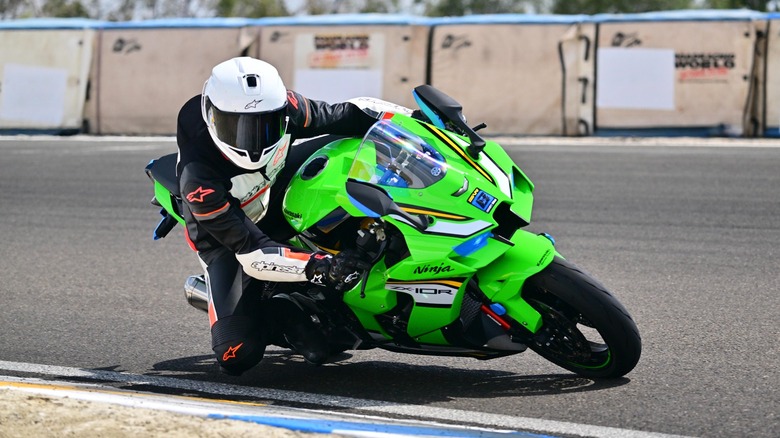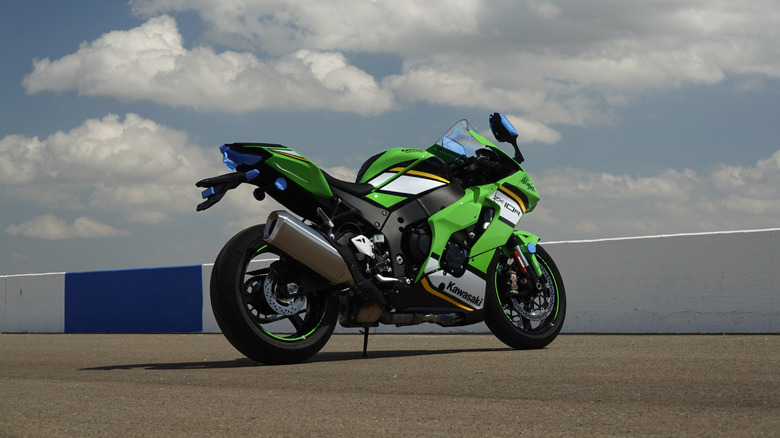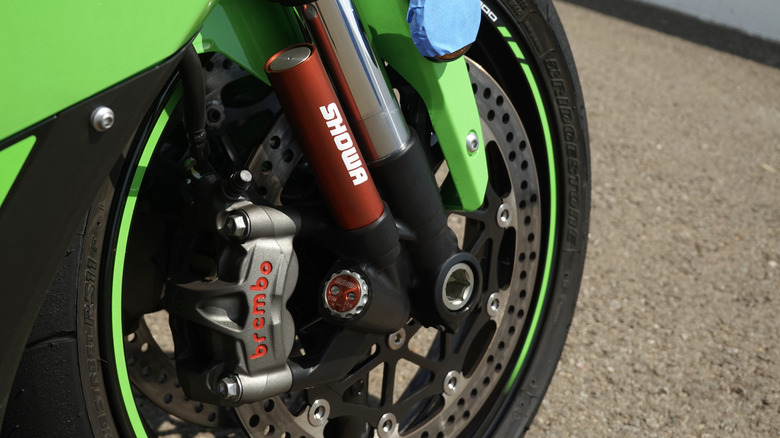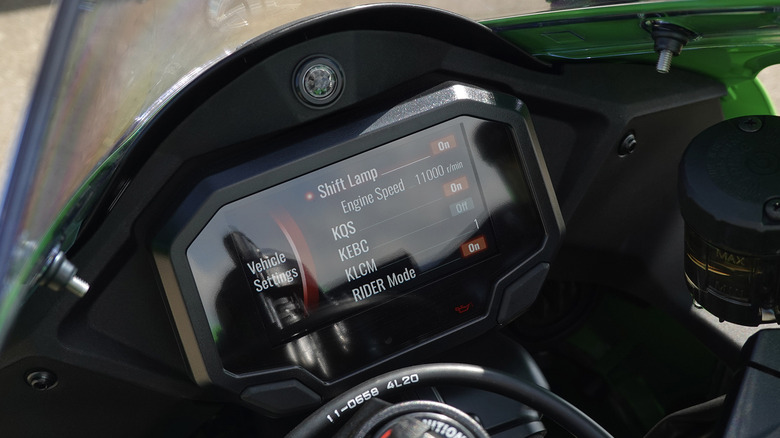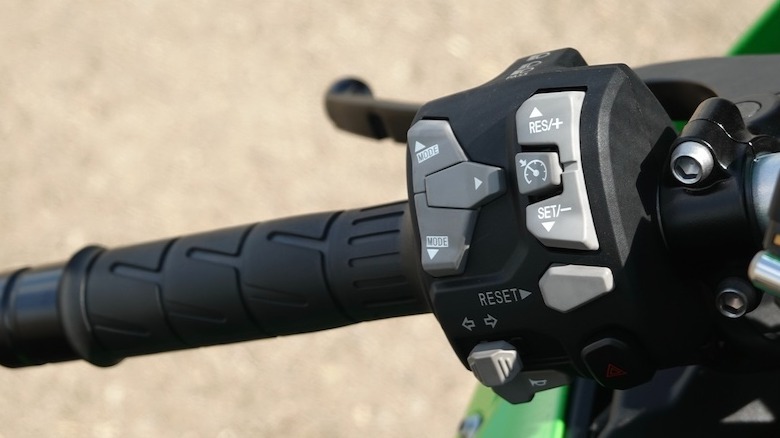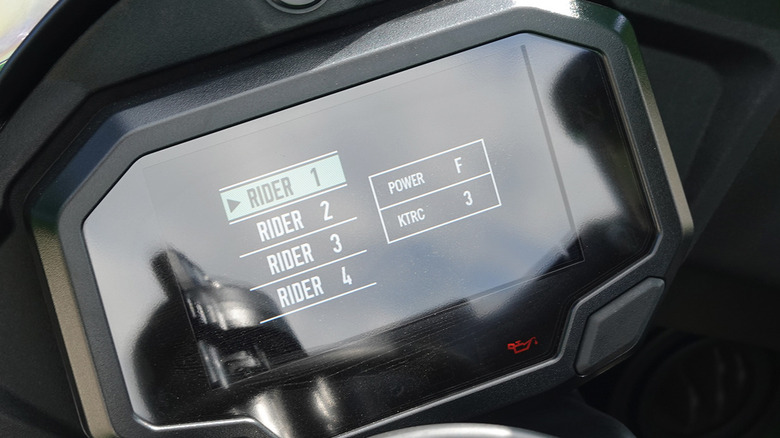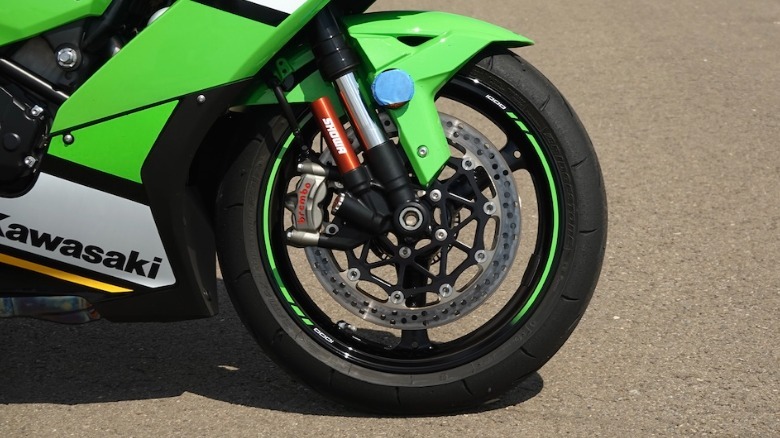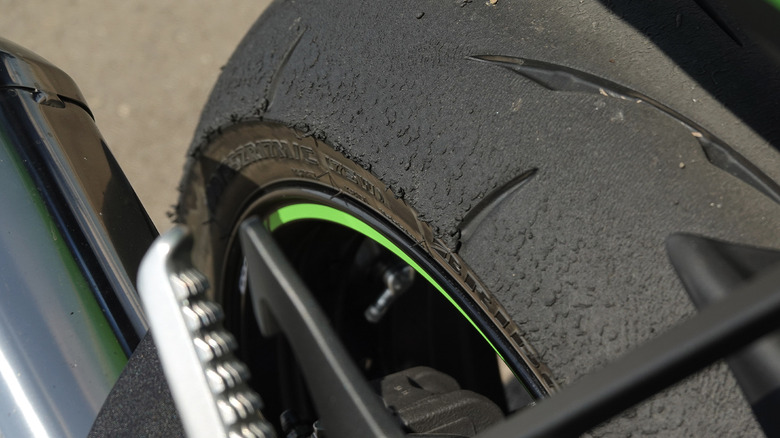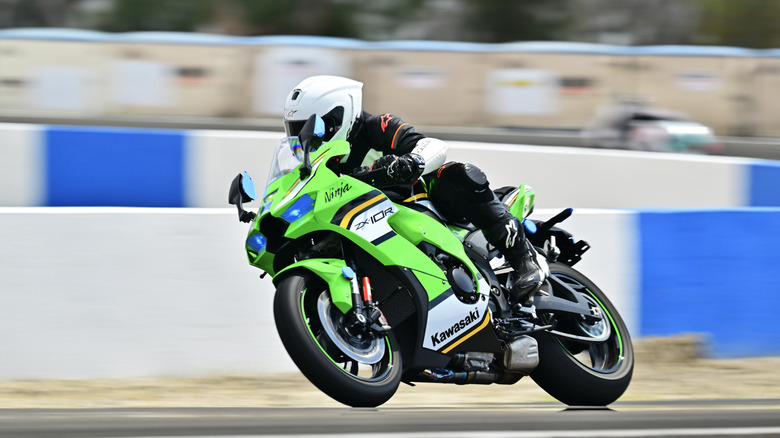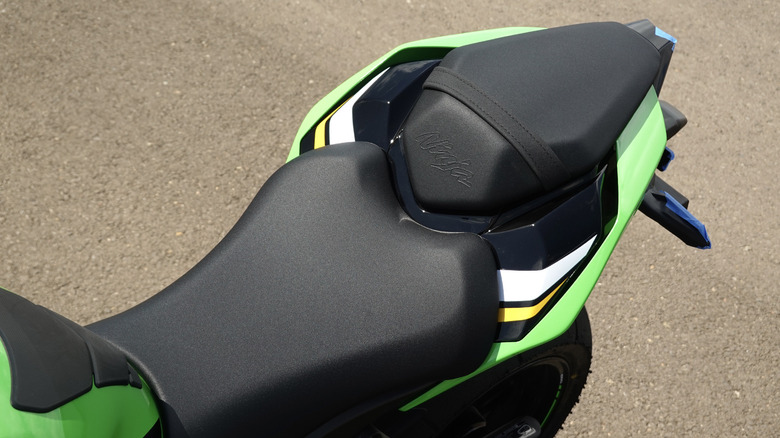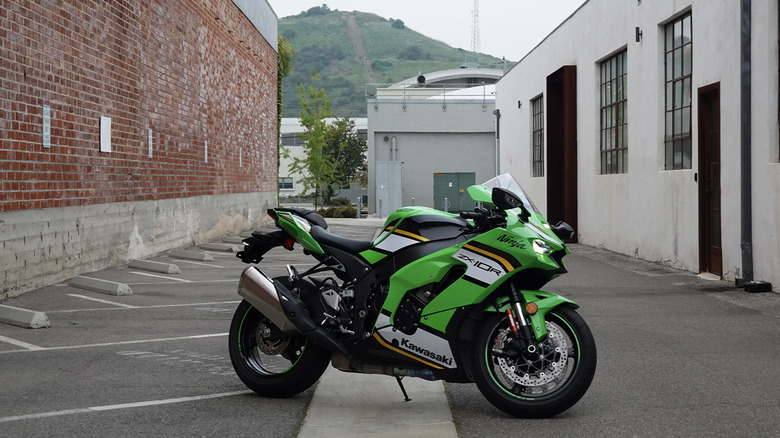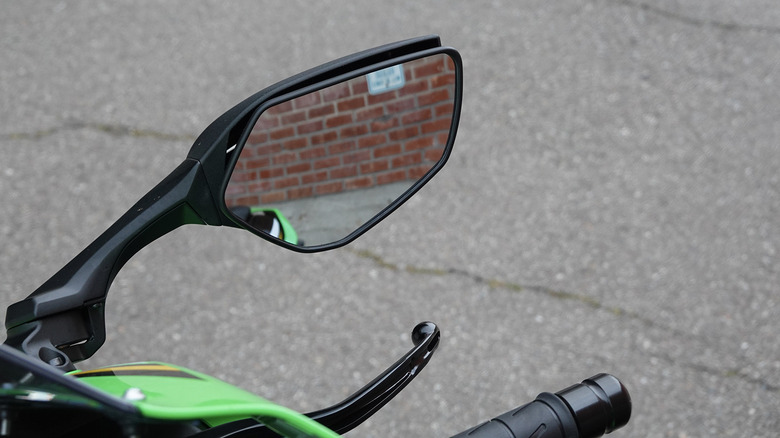2025 Kawasaki Ninja ZX-10R Review: The Perfect Superbike For The Streets
The eternal dilemma for motorcycle track rats never reaches a satisfying solution: whether to buy a big power bike or a more affordable base model and invest in upgrades. The answer, of course, is to just make more money and buy all the bikes forever. But for those less financially able—or willing—to invest heavily in track day fun, the age-old question still requires a serious pondering.
This exact situation came to a head for me last year as I started perusing Craigslist and Facebook Marketplace hoping to find a solid platform to serve as a potential street-legal track build. The catch? I wanted to keep my initial expenditure to only around five grand. Eventually, I found a lightly used 2002 Honda CBR954RR for exactly that amount—just about the pinnacle of 2002 technology, and I love the bike, especially for the money.
Testing a budget-friendly literbike
Still, I can admit that my CBR undoubtedly lacks the spine-sucking gut punch of today's 200-horsepower (or more!) superbikes. And I am undoubtedly spoiled rotten by needing to ride the industry's latest and greatest for work. But I also always wonder about more affordable modern literbikes, specifically for track work, and luckily the time finally came recently to take one of the most intriguing options, Kawasaki's Ninja ZX-10R that starts at a reasonable $17,399 price point, out to Buttonwillow's newly paved circuit.
I previously rode and reviewed the Ninja 400 and ZX-4RR multiple times, both on road and on track. But I took the ZX-10R loaner specifically for a track day in the mid-level B group with a local org called TrackDaz that a few of my friends frequent. Rather than asking Kawi to prep the bike, though, I left the street equipment intact and taped up all the glass, hoping to get some time in the city afterward in the name of science, too.
New bike, new track, new me
But first, Buttonwillow's new track. Looking at a map beforehand, the layout looked similar to the old track, but in person while camping trackside the night before, the wider and smoother curves looked perfect for riding. The next morning, I woke up and stretched, warming up to the prospect of a day in the saddle by checking my tire pressures and slipping into my full leathers. I knew I wanted to consciously take the first 20-minute session slow, both to adjust to the ZX-10R as well as the new track. And in fairness, new Buttonwillow mostly flows well, other than two challenging righthanders toward the last third of the 2.56-mile circuit.
The ZX-10R is no joke, either, by any means. A 998cc inline-four cranks out just shy of 200 horsepower on the way to a 14,000-RPM redline. But this KRT Edition with ABS weighs 456.4 pounds, so not exactly a lightweight. Still, over an initial few laps, the bike surprised me with unexpectedly quick turn-in and responsive weight transfer that belies the specs on paper. The Öhlins steering damper helps, maybe, and the nifty adjustable fork dials too. Brembo front brakes fit into the mix, requiring a little extra effort early into the bite but then progressively chomping down on the 330-millimeter rotors to haul down pace.
Struggling with early and aggressive traction control intervention
But even through my warmup of warmups, I already noticed a ton of egregious traction control nannying. Without exaggeration, I struggled to carry any speed at all while leaned over minimally through corners, as the throttle response completely died and gave nothing when asked, allowing the revs to drop precipitously until I straightened the bike back up again. Then, all of a sudden, a hard hit of low-end torque would jerk me forward. Clearly, time to dig into the electronics on that 4.3-inch digital display back in the pits.
I learned a lot about the importance of increasingly computerized superbikes while shredding tires at Laguna Seca last summer on a Ducati V4 S. Dialing in the adaptive suspension and riding modes opened up the ability for the Panigale's counter-rotating crankshaft to prevent me from running out wide. Plus, the subtle interventions of wheelie control and lean-sensitive traction control made me ride with even more confidence than I probably deserved. Groundbreaking tech, to say the least, and critical in an era when any old fool (like me) can just take out a loan and buy a motorbike with the power-to-weight ratio of an F1 car.
Electronics are the name of today's superbike game
Much like most new-to-me bikes, the ZX-10R's controls took a few minutes to fully decipher. I quickly figured out how to change ride modes, but just the basics. And the settings for custom Rider 1, 2, 3, and 4 stayed the same no matter what buttons I clicked. After a quick YouTube session, though, I toggled through to adjust the power and traction control, selecting KTRC to 3 in the hopes of straddling the fine line between predictability and safety.
In the next session, the immediate difference helped to inspire more pace through each corner, allowing maintenance throttle and not killing the engine at any hint of lean angle. I understand the importance of keeping bikes tame on the road, but the level of oversight even in Sport still went a little overboard.
Warming up again
Instead, I now found the mental time to explore other aspects of the ZX-10R. The brakes continued to impress, never wearing out my right middle finger or grip strength despite harder and harder braking pressure that put some strain into my forearms and shoulders. The suspension also perfectly matched my size and weight—at six-foot-one and about 175 pounds before gear—without too much twitchiness, so I never felt inclined to fiddle with the manually adjustable knobs. Even the seat to pegs to handlebars geometry fit my frame fairly well, not always so with hardcore Japanese motorcycles that tend to leave my knees cramped and my head out fully past the windscreen.
I also kept one eye on the Bridgestone Battlax RS11 tires, which warmed up quickly on each out lap despite only moderate temps throughout the day. As I started cutting the chicken band right down to the edge, the rubber's responses only improved—so much so that I might try to get a set on my CBR954RR. And once I did start to rip off more speed, growing more comfortable through full throttle in second and third and fourth, up to 140 miles an hour and above coming low around the wide lefthander onto the front straight, the ZX-10R finally hit the kind of liter-bike acceleration where time appears to warp "Star Wars" style.
Push pace and find out
Digging deeper into the braking zones, starting to drag my knees more and adjust my body around the bike, I then began to lose some comfort level while finding some of the limiting factors. At the sheer velocity that the screaming inline-four produces, absolutely wailing up high above 9,000 RPM, using the quickshifter especially for downshifts makes a huge difference while trying to keep the engine revved up as high as possible to improve engine braking—and thereby hug tighter to the apex—through corners. The time to clutch in and shift and clutch out simply evaporates, or requires a different mindset altogether.
The ZX-10R's quickshifter performed well for downshifts, but the upshifts at full throttle need work. In fact, the system seemed to struggle more and more as the day went on, and by a little after noon I even started hitting my helmet on the windscreen repeatedly. This happened more than once on a little downhill section after a strangely tricky righthand bend. Right when I started pulling hard enough, almost lifting the front end and wheelieing in first gear, right then the transmission often balked at the worst possible moment, slamming the front wheel (and my face) down on the descent.
Shoulda woulda coulda... gotten the Double-R
The prospect of potentially breaking the bike somehow came to mind, too, not just my performance. So I consciously tried to take the preceding corner in second a few times, but ended up just clutching gently between first and second to prevent the lurching. Or is this quickshifter simply unable to handle the top end of the Kawasaki's tachometer?
Then again, while Googling how to adjust the traction control modes, I realized that I had taken a loaner of the ZX-10R rather than the ZX-10RR. What a rookie mistake. The "Double-R" as Honda fanboys might call it does produce one additional horsepower. But more importantly, I wondered if the more hardcore track tuning might include revisions to the electronics suite.
City life on the ZX-10R
The RR also costs way more, as in almost double, at $30,499. For that money, a Panigale V4 S starts to look a lot more enticing. Yet neither fits into my own character arc of track boy toys quite as well, given the price tags. Then I took the ZX-10R (single-R) out on public roads for the rest of my time with the loaner. And here, at more reasonable speeds, the quickshifter worked great! Instead of lurching, the smooth action even at half throttle and as low as 6-7,000 RPMs never caused an issue.
While riding around Los Angeles or the surrounding hills, traction control cutting power also never entered my mind because I never leaned over quite as low as even those first warmup laps at Buttonwillow. I wound up keeping the ZX-10R mostly in Sport mode, other than exploring the Rain setting, as promised in the name of science. After all, staying upright through a wet patch of asphalt or over a metal grate matters more than shaving a few tenths of seconds off my commute time.
2025 Kawasaki Ninja ZX-10R Verdict
Meanwhile, the exhaust note that opened up so nicely on the racetrack now stayed fairly tame at lower revs, so I never felt bad firing up the bike and potentially waking my neighbors up early in the mornings. The low-end torque availability of inline-fours partially attracted me to the CBR originally, and Kawasaki clearly understands that life on a bike gets easier with such smooth and accessible grunt.
Anywhere near 200 horsepower clearly lets me get away from traffic with ease, too, or avoid sketchy situations coming up from behind—plus, this ZX-10R's rearview mirrors actually work! As in quite possibly the best, from both the functional visibility and adjustability standpoints, of any motorcycle yet. Why other manufacturers can't figure this out, I can't figure out. And still, the smooth suspension, progressive brakes, and comfortable geometry continued to convince me that the ZX-10R might be the best superbike for the street, for the money. Even if, for serious track work, I might need to try the Double-R.
